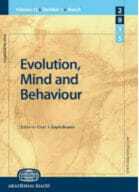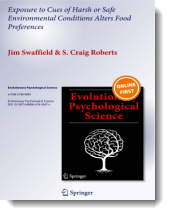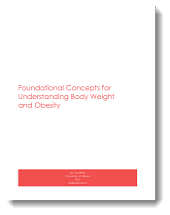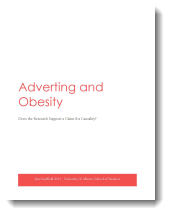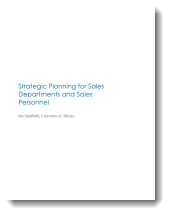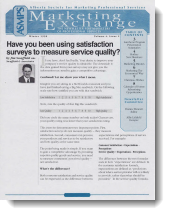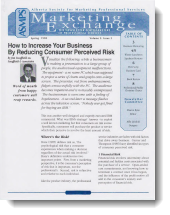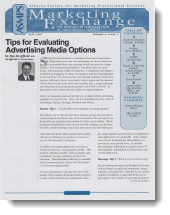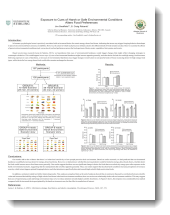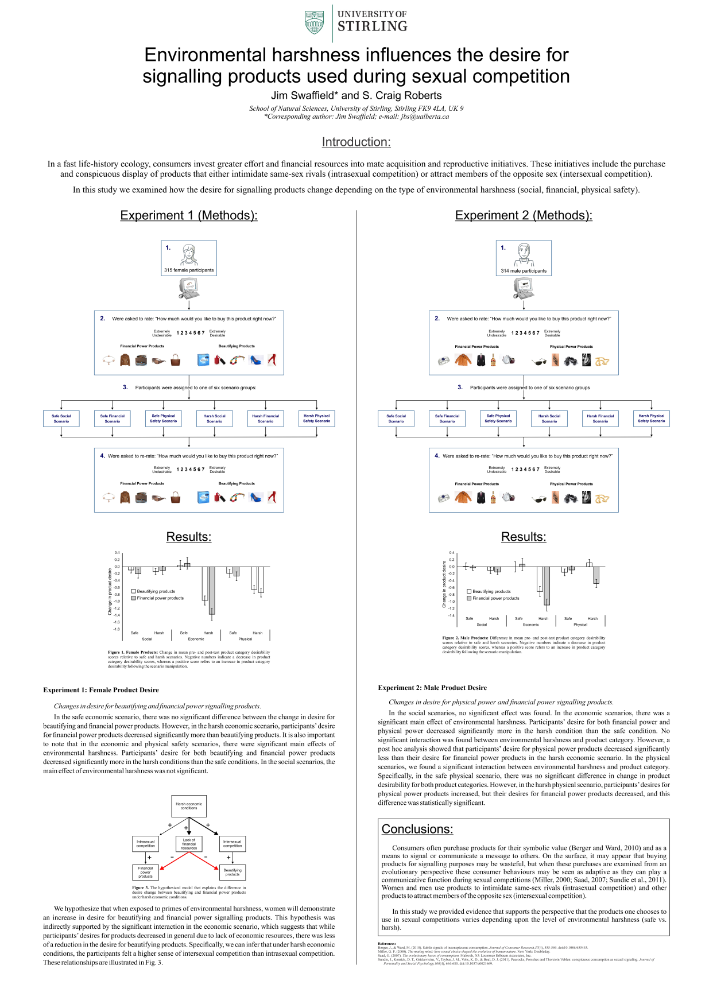Feature Article
How Childhood Socioeconomic Status Impacts Adult Food Preference: The Mediating Role of Stress and Trait Appetite
Prior research has shown that adults who were raised in a low socioeconomic status (SES) environment are more likely to desire energy-dense foods. Research has also shown a positive correlation between current stress levels and the desire for energy-dense foods. We hypothesized that stress and trait appetite mediate the relationship between childhood SES and the desire for low and high-energy-dense foods. Read More »
Research Articles
Internationally renowned magazine Psychology Today writes article on the impact of research conducted by Jim Swaffield and Craig Roberts.
Most people’s food habits are affected by stress, whether it’s losing your appetite before a work presentation, mindlessly eating from the jellybean jar at work, or finding comfort in a tub of ice cream after an argument with your significant other. The relationship between stress and eating has roots in our evolutionary past. Life was no picnic for our ancestors. It is believed that humans evolved in environments in which food could be scarce. Read More »
Environmental Stress Effects On Appetite:
Changing Desire For High- And Low-Energy Foods
Depends On The Nature Of The Perceived Threat
It is well-documented that harsh environmental conditions influence appetite and food choice. However, the experience of environmental harshness is complex and shaped by several underlying dimensions, notably threats to one’s social support, economic prospects, and physical safety… Read More »
Exposure to Cues of Harsh or Safe Environmental Conditions Alters Food Preferences
In humans, psychological stress is positively correlated with an increased desire for certain energy-dense food items, indicating that stress may trigger foraging behavior that adapts to perceived current and future resource availability. However, the extent to which such processes influence desire for different kinds of foods remains unclear. Here, we examine the effects of perceived environmental conditions on food preferences across the food spectrum of dairy, meats, vegetables, fruit, grains, and sweets. Read More »
Foundational Concepts for Understanding Body Weight and Obesity
There has been much research on food consumption and obesity yet, its causes and solutions remain poorly understood. I believe the study of obesity and the discovery of cures has been hindered due to a focus on identifying proximate rather than ultimate level explanations. In this paper I will provide an overview of foundational concepts that will enable a deeper understanding of human body weight, the biological function of fat and factors that may be drivers of the obesity epidemic. Read More »
Advertising & Obesity: Does the Research Support a Claim for Causality?
It is often claimed that food advertising influences what foods one chooses to eat and how much one consumes. As a result, food advertising is often considered to be a contributing factor in the obesity epidemic. There are however, a number of counter arguments that challenge this perspective. The purpose of this paper is to present these arguments so that a balanced understanding of the relationship between advertising and food consumption can be gained. Read More »
Strategic Planning for Sales Departments and Sales Personnel
Imagine two people paddling a canoe. What would happen if the person in the bow was paddling forward and the person in the stern was paddling backward? Would this team of paddlers get very far? There is a small chance they might drift in the direction they want to go. However, the odds are they will expend a lot of effort and not move forward in the direction desired. Read More »
Have you been using satisfaction surveys to measure service quality?
If you have, don’t feel badly. Your desire to improve your company’s service quality is admirable. The downside is the data gained from your surveys may not give you rhe information you need to gain a competitive advantage. Confused? Let me show you what I mean… Read More »
How to Increase Your Business by Reducing Consumer Perceived Risk?
Visualize the following: while a businessman is making a presentation to a large group of people, the audiovisual equipment malfunctions. The equipment – a no name PC which was supposed to project a series of cbarts and graphs onto a large screen. The presenter, red from embarrassment, fidgets unsuccessfully with the PC. The audience becomes impatient and is noticeably unimpressed. The businessman is overcome with a feeling of hopelessness. A second later a message flashes across the television screen, “Nobody ever got fired for buying an IBM.” Read More »
Tips for Evaluating Advertising Media Options
Selecting the best medium to advenise in has never been more difficult. When there was only one newspaper to choose from you could be guaranteed that your message would be seen by a large portion of the Edmonton population. But those days are gone. Today, Edmonton has 4 daily newspapers, 4 community newspapers, 2 business newspapers, 15 ethnic newspapers, and 54 local magazines to choose from. Now factor in the 13 local radio stations, 5 television stations, billboards, flyers, direct mail, yellow pages and the internet. If this doesn’t make your head spin consider this, a single half-page advertisement in the Edmonton journal costs $7300 to $8400. At these prices one cannot afford to make too many mistakes. Read More »
Conferences
2014 International Conference on Human Ethology
Research results presented at the 2014 International Conference on Humn Ethology in Belem, Brazil. Read More »


